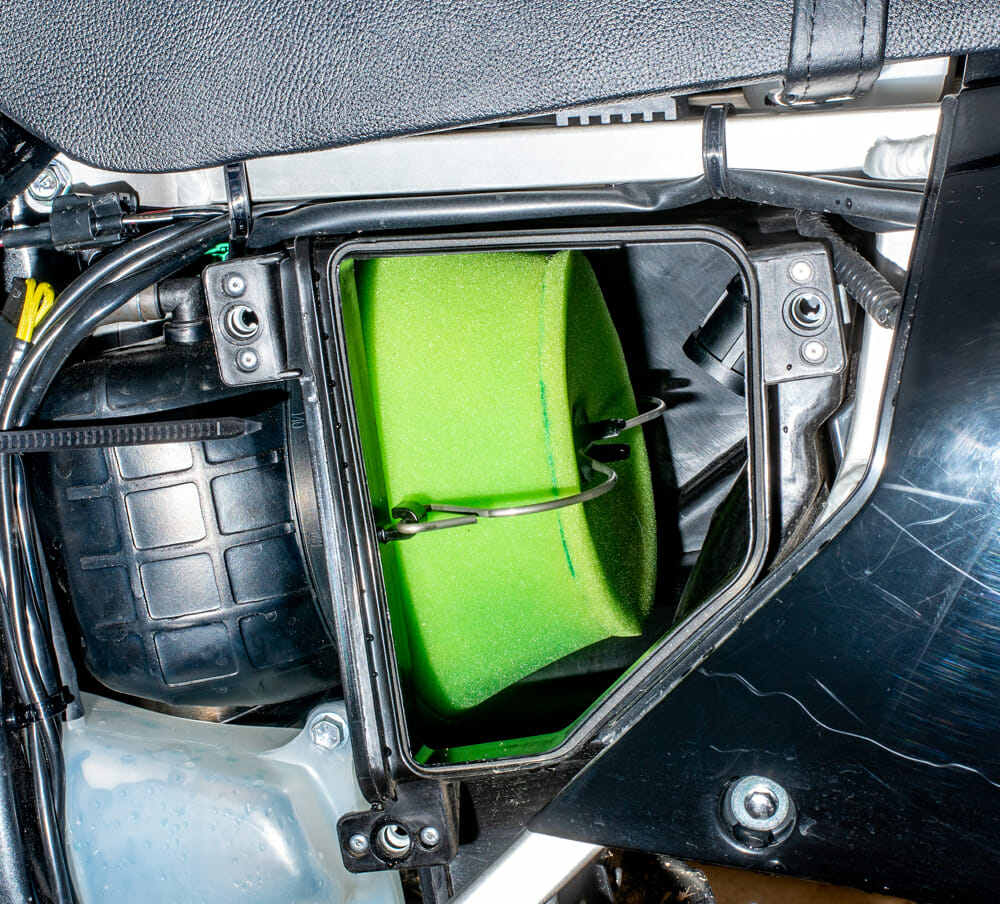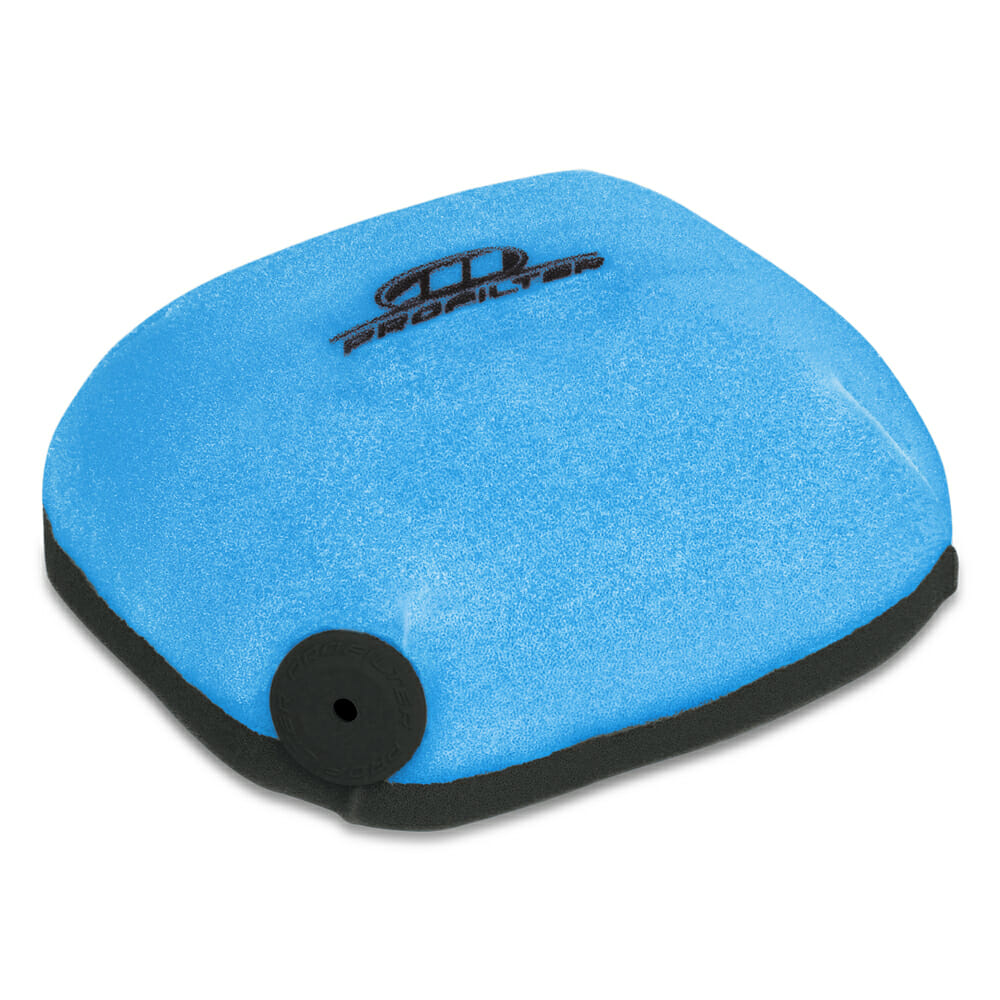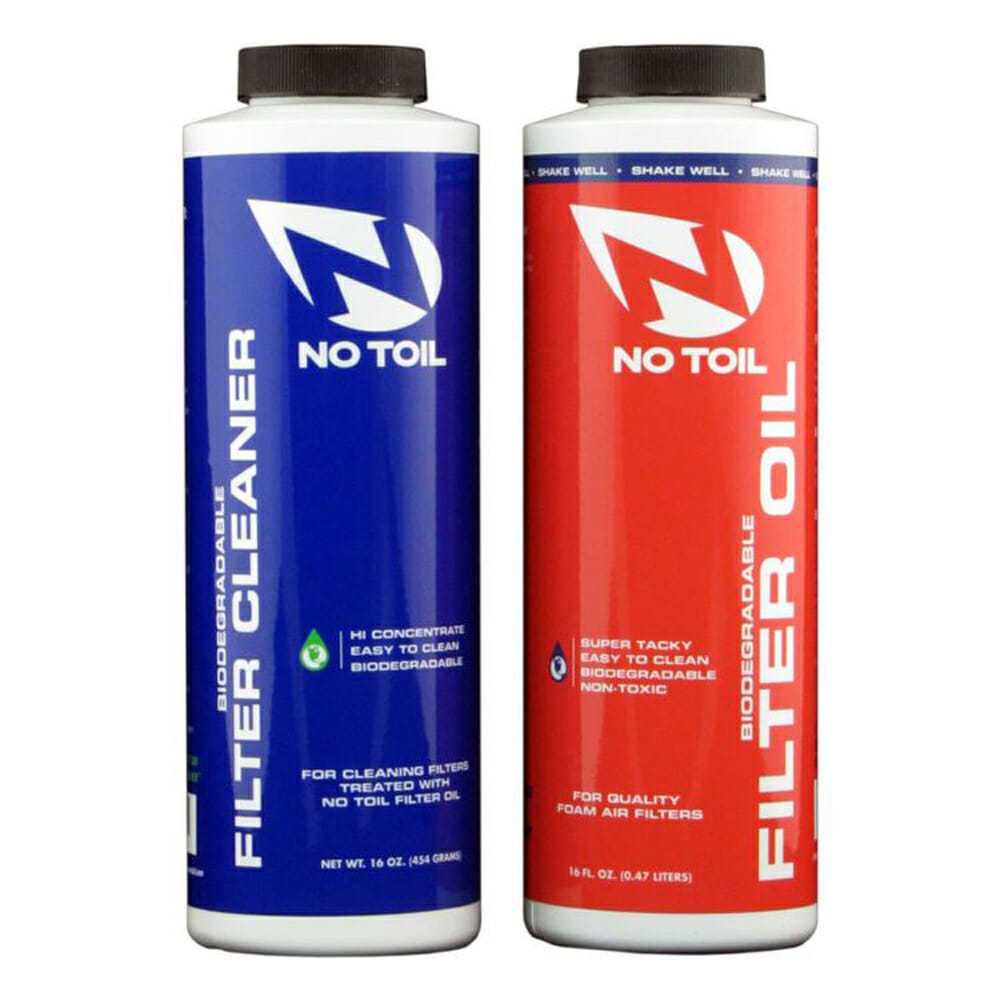How-To Maintain Your Motorcycle Air Filter
Engines love clean air filters, and no one likes to clean them—it’s a dirty job, but we all have to do it if we want to keep riding. Just like most dirty jobs, using disposable latex or nitrile work gloves will make the job neater and safer for your skin.

A clean air filter is critical to your motorcycle’s health and performance. You should never skimp in this department because a plugged-up air filter can seriously reduce the performance of your bike’s engine. Worse, an improperly maintained air filter can drastically shorten the life of the engine, sometimes suddenly and catastrophically.
There are three types of air filter materials commonly found on motorcycles: foam, paper and cotton. Foam and cotton filters are reusable, paper filters are not.
Beginning with foam filters, these are the type commonly found in off-road motorcycles. Foam filters require more frequent maintenance due to their use in dirtier conditions and the fact the foam is more porous. But foam filters are fairly simple to access, remove, clean and re-install. In fact, some well-designed airboxes require zero tools to complete the job.

First, you must remove the filter element (foam) and the filter cage/frame (what the filter itself is attached to) from the motorcycle/airbox. Be careful not to contaminate the intake tract with dirt when you do this. Then, it’s a good idea to carefully inspect, clean, and place a rag in the air intake boot to prevent debris from accidentally falling into the tract. Once separated, a good way to clean your filter is by using solvent first, then following that with a water and detergent bath. Motorcycle oil/chemical companies such as Maxima, Motorex, PJ1, TwinAir, No Toil, and Bel-Ray all make dedicated foam air-filter cleaning products and corresponding oils, pairing these two components ensures filters get cleaned and oiled the best.

You can also purchase an air filter cleaning kit, which will include everything you need—filter cleaner (solvent), filter oil, and even a wash bucket—to complete the job from one of the filter manufactures. One example is The System air filter cleaning kit from TwinAir.
For those who would rather not get their hands dirty, and there’s no shame here, there are even air-filter cleaning services that will professionally clean and oil your filters for you, such as MX Filter Service. Just stuff your dirty laundry in a box, mail them to MX Filter Service in Southern California, and presto, fresh oiled filters (your same exact ones) arrive at your doorstep! It doesn’t get much easier than that.
Once you’re satisfied that your filter is dirt- and grit-free, rinse it thoroughly with tap water and let it dry. You can help speed the drying process by gently squeezing the filter free of water (careful not to damage the shape of the filter) and setting it in a well-ventilated area to dry.
Be sure it’s completely free of water before you apply oil.
When the filter is completely dried out, it’s time to saturate the foam with oil. The keyword here is saturate. The most important step in air-filter maintenance is the correct application of oil. To do it right, the foam element must be completely submerged in oil, thoroughly saturated, and then all the excess oil must be squeezed out. If your motorcycle uses a universal-type filter pod or a sock filter with the flex-core design, it is necessary to remove the spring support to squeeze out the extra oil. This is the only sure method of coating the entire filter with dirt-catching oil.
In lieu of disposable plastic gloves, you can use a plastic bag to help make the operation cleaner. Simply insert the filter in the bag, pour in the oil, and massage the bag and filter until the filter is saturated. Many people just pour oil onto the filter from the outside and try to work the oil into the foam by hand, but this isn’t as effective as dunking the filter in oil.

“Foam filter oil is unique as it contains thinning agents to expedite the oil evenly through the foam pores,” says Jeremy Garges of TwinAir. “If you put too much oil on the filter, it will drain out of the foam, the filter dries out, thus reducing the effectiveness of the filter. Foam filter oil is used not only to catch dirt, but is essential to maximizing air flow through the foam pores.”
While we prefer liquid, foam filter oils do also come in aerosol form. If using these, be sure to coat both the inner and outer surfaces of the filter generously. Let the filter set for three to five minutes and then massage the oil into the foam. If your filter has two elements, be sure to oil both layers with oil. Twin Air does not recommend leaving any part of the filter dry. TwinAir and Filter Skins also offer outer covers that slip over the entire foam element to help keep debris such as sand from building up.
When reinstalling the filter, clean the inside walls of the airbox first. And check the intake tract one last time. If you feel any kind of grit, then it is very important to wipe it completely clean. And don’t forget to remove the rag!
Some prefer to coat the base of the air filter that rests against the airbox with grease to form a dust-proof seal, but if the foam filter is fully submerged in oil, the sealing ring portion of the filter will have oil on it, and once mated to the airbox will form its own oil barrier much like grease. After reinstalling and tightening the filter cage fastener(s), run your fingers around the entire perimeter of the base to make sure the filter is flush with the air boot.
Cotton-gauze filters (usually found in street bikes) require different cleaning methods. Gas or solvents shouldn’t be used to clean these kinds of filters. Instead, specially designed cotton-gauze filter detergents should be used. After thoroughly cleaning the filter with detergent and letting it dry naturally, filter oil should then be applied by applying oil on the filter and letting it soak in. Cotton filter manufacturers are the best source of detailed instructions here as they vary slightly in recommendations.
If your motorcycle has a paper-type filter, maintenance is greatly simplified—just throw away the old filter and install a new one. That’s it. There’s no proper way to clean a paper filter. Although many people believe that blowing high-pressure air through it will do the trick, this is not true. Even though some of the dirt does become dislodged, the high-pressure stream of air also enlarges the filtering holes, thus reducing its effectiveness.
How often should you inspect your filter? Often. Especially for dirt bikes. Riding in dry and dusty conditions, you probably should just go ahead and clean the filter after every ride, otherwise keep a close eye on it. When in doubt, clean your motorcycle’s air filter often. Better safe than sorry. CN

Click here to read How To Maintain Your Motorcycle Air Filter in the Cycle News Digital Edition Magazine.
Click here for more Motorcycle How-To Articles on Cycle News.
